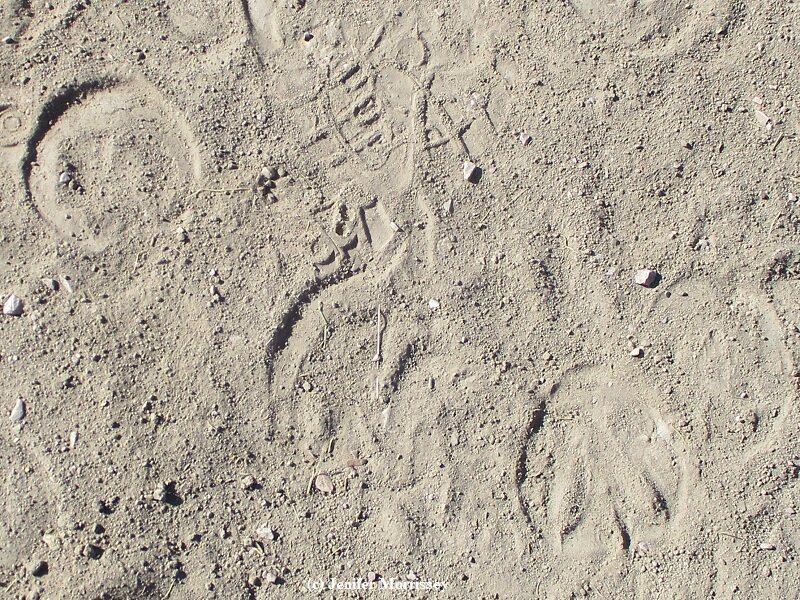Hoof Arch 2
I had a new farrier out to trim my ponies’ hooves. Technically he’s not really a farrier; he calls himself a barefoot trimmer. I have recently come to an enhanced appreciation of that vocation. I hadn’t realized that indeed there is a difference between trimming hooves and trimming to mimic an ideal hoof on an equine living a barefoot (rather than shod) existence.
Two different hoof shapes
I asked the trimmer about the shape of one of my ponies’ feet. They are more oval than round; you can see hers and a rounder hoofprint in the photograph. This pony hadn’t ever had her hooves trimmed before I purchased her, and I have known she and I are on a journey to getting her feet healthy. The answer the trimmer gave about the shape of her foot surprised me but made perfect sense.
I had learned a few months before that a healthy foot on an equine living on perfect terrain develops an arch in the quarters of the hoof wall (think 4 o’clock and 8 o’clock). The arch allows the hoof wall to compress onto the ground when under full bearing weight, enabling it to absorb concussive forces and then spring back to arch shape again. (Click here to read my previous post on hoof arches and how hooves are dynamic structures. A photograph of an arch is included there).
Conventional hoof trimming as I was taught has the hoof wall nipped and filed to be in a plane, all one level all the way around. What happens, then, when the hoof meets the ground under full bearing weight? What happens if there’s not an arch in the wall to absorb some of the concussive forces of landing? The barefoot trimmer suggested to me that those forces may push forward and backward on the foot, elongating the shape of the hoof into an oval. Of course, every equine is different, with different shock absorption abilities based on conformation and other factors, so even if two ponies are trimmed conventionally it isn’t necessarily the case that they will both develop oval hooves.
There is, naturally, good news in the trimmer’s explanation of my mare’s oval hooves. Each time he trims, he makes sure there is an arch in the hoof wall, so in time we should see my mare’s feet become more round and more healthily shaped. I look forward to watching the process!
© Jenifer Morrissey, 2020
You can find more stories like this one in my book The Partnered Pony: What’s Possible, Practical and Powerful with Small Equines, available internationally by clicking here or on the book cover!

